
How to Use LED: Two Pin (red) - Long Pins: Examples, Pinouts, and Specs
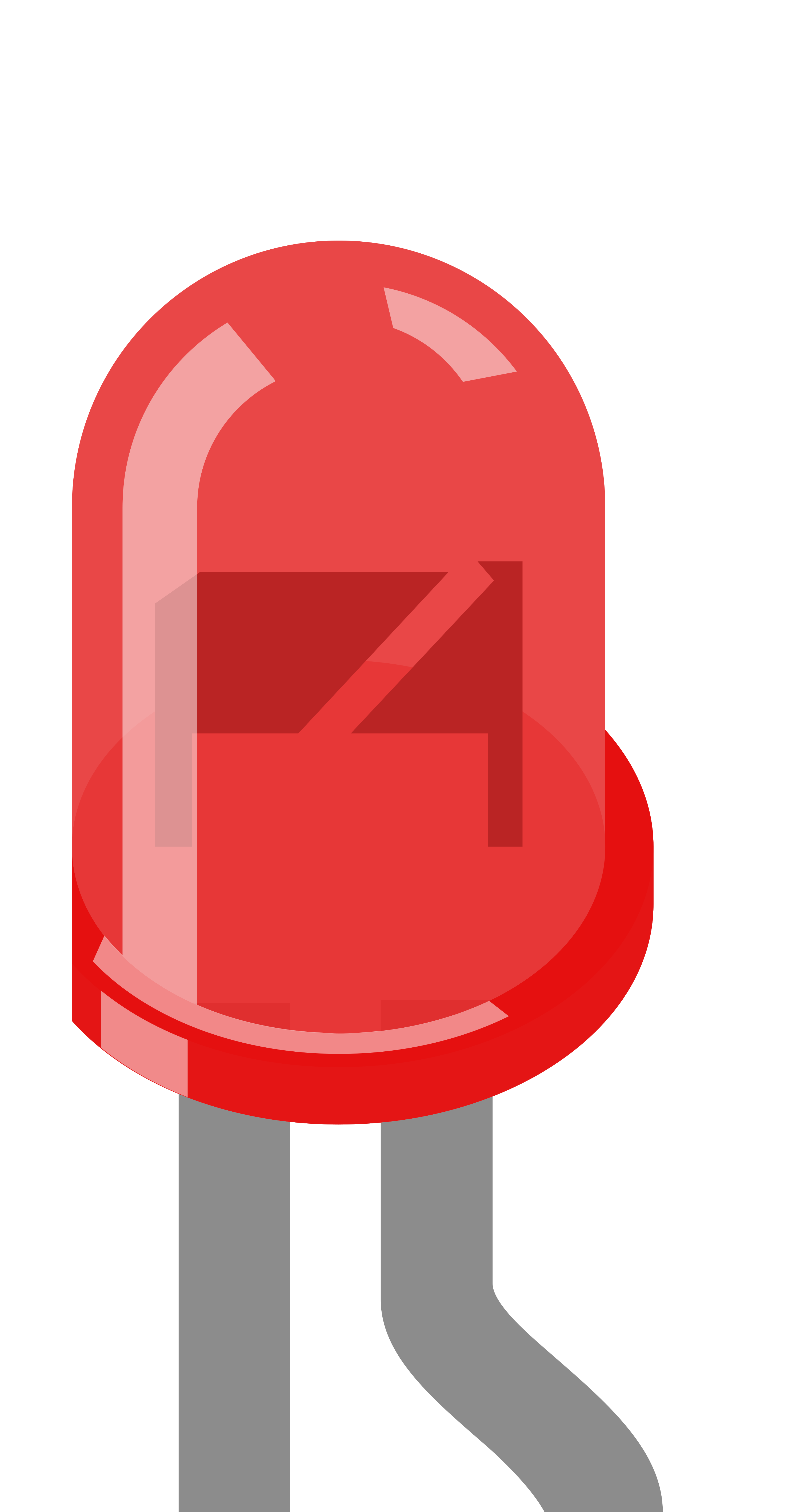
 Design with LED: Two Pin (red) - Long Pins in Cirkit Designer
Design with LED: Two Pin (red) - Long Pins in Cirkit DesignerIntroduction
A light-emitting diode (LED) is a semiconductor device that emits light when an electric current flows through it. This particular LED emits red light and features two pins, with one pin longer than the other for easy identification of polarity. The long pins make it convenient for soldering or insertion into breadboards, making it ideal for prototyping and educational purposes.
Explore Projects Built with LED: Two Pin (red) - Long Pins
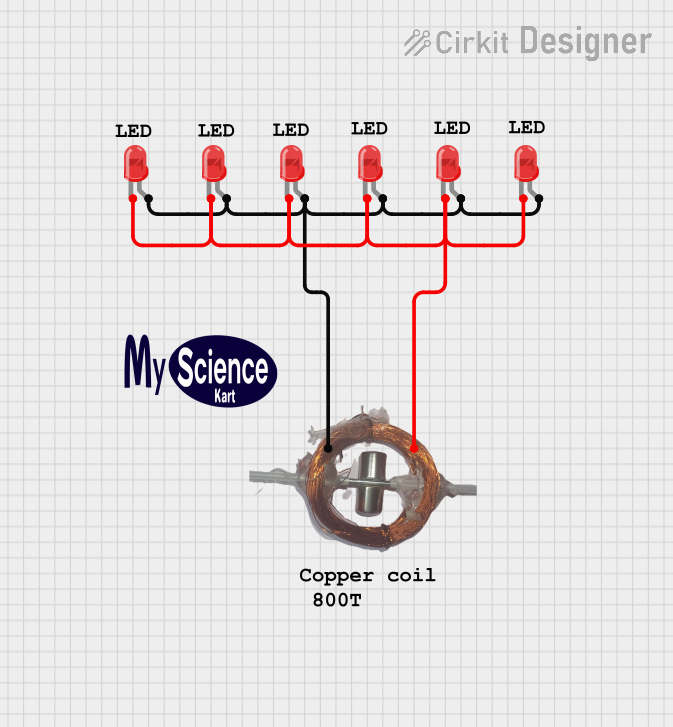
 Open Project in Cirkit Designer
Open Project in Cirkit Designer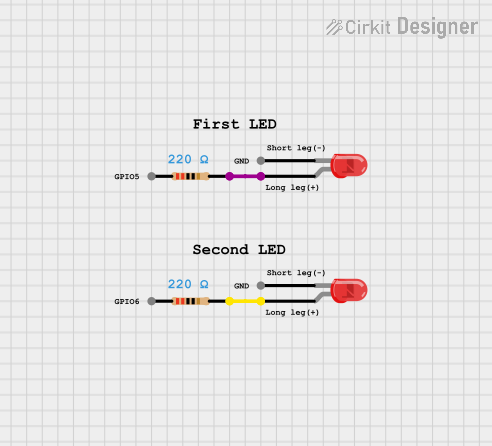
 Open Project in Cirkit Designer
Open Project in Cirkit Designer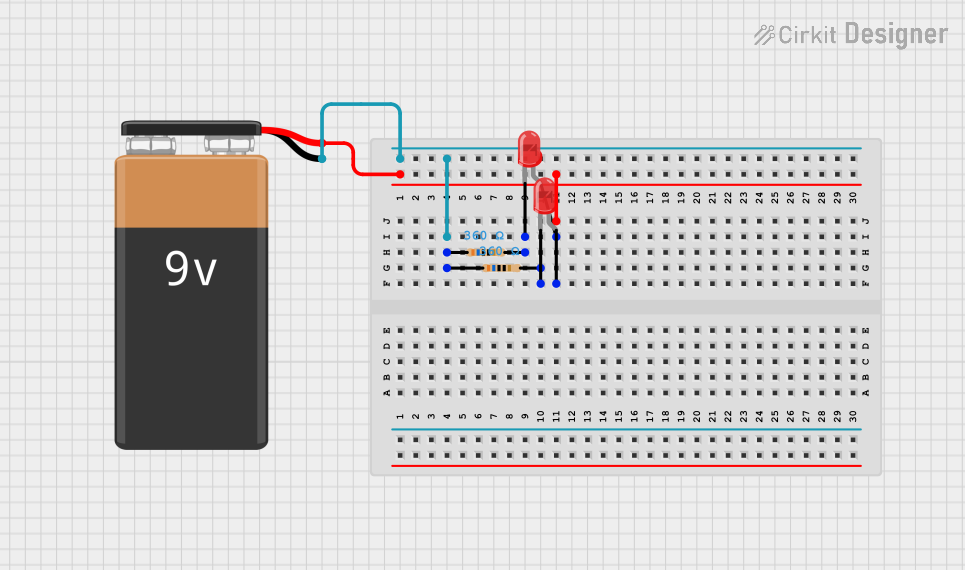
 Open Project in Cirkit Designer
Open Project in Cirkit Designer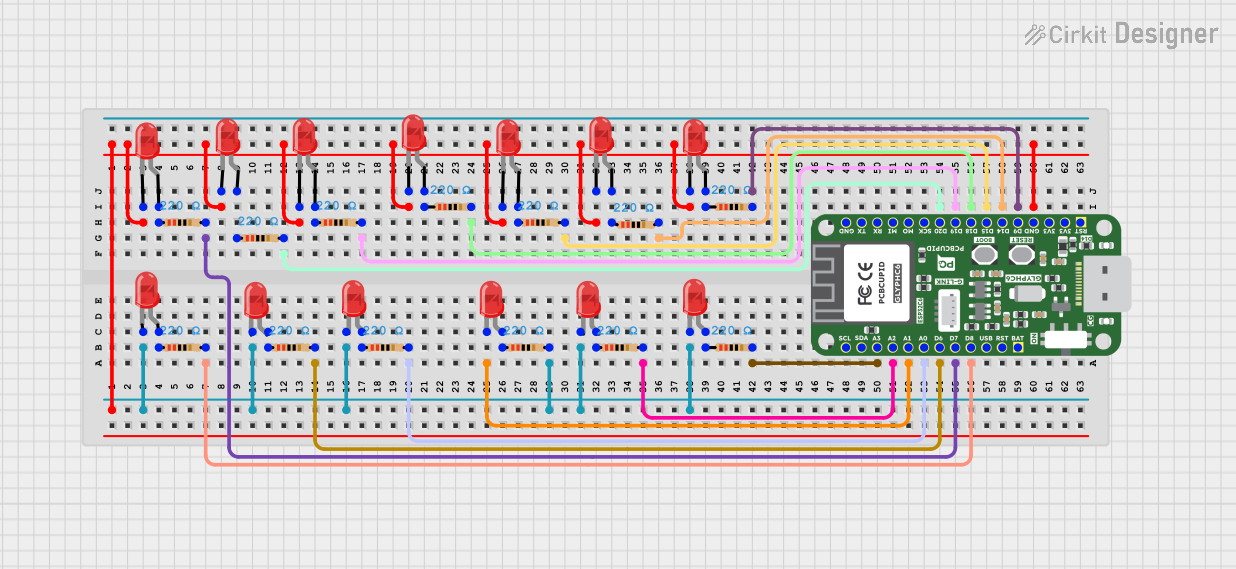
 Open Project in Cirkit Designer
Open Project in Cirkit DesignerExplore Projects Built with LED: Two Pin (red) - Long Pins

 Open Project in Cirkit Designer
Open Project in Cirkit Designer
 Open Project in Cirkit Designer
Open Project in Cirkit Designer
 Open Project in Cirkit Designer
Open Project in Cirkit Designer
 Open Project in Cirkit Designer
Open Project in Cirkit DesignerCommon Applications and Use Cases
- Indicator lights in electronic devices
- Visual feedback in circuits (e.g., power-on indicators)
- DIY electronics projects and prototyping
- Educational tools for learning about electronics
- Decorative lighting in small-scale projects
Technical Specifications
Key Technical Details
- Color of Emission: Red
- Forward Voltage (Vf): 1.8V to 2.2V
- Forward Current (If): 20mA (typical)
- Maximum Reverse Voltage: 5V
- Wavelength: ~620-630 nm
- Viewing Angle: ~30 degrees
- Pin Length: Long pin (anode): ~25mm, Short pin (cathode): ~20mm
- Power Dissipation: ~60mW
Pin Configuration and Descriptions
| Pin Name | Description | Identification Method |
|---|---|---|
| Anode | Positive terminal of the LED | Longer pin |
| Cathode | Negative terminal of the LED | Shorter pin, or flat edge on the LED casing |
Usage Instructions
How to Use the Component in a Circuit
Identify the Polarity:
- The longer pin is the anode (positive terminal).
- The shorter pin is the cathode (negative terminal). Alternatively, look for the flat edge on the LED casing, which marks the cathode.
Connect to a Power Source:
Always use a current-limiting resistor in series with the LED to prevent damage. The resistor value can be calculated using Ohm's Law: [ R = \frac{V_{supply} - V_f}{I_f} ] Where:
- ( V_{supply} ) is the supply voltage.
- ( V_f ) is the forward voltage of the LED (1.8V to 2.2V).
- ( I_f ) is the forward current (20mA or 0.02A).
For example, if the supply voltage is 5V: [ R = \frac{5V - 2V}{0.02A} = 150 , \Omega ] Use a 150Ω resistor (or the nearest standard value).
Insert into a Breadboard or Solder:
- Insert the LED pins into a breadboard or solder them onto a PCB, ensuring correct polarity.
Test the Circuit:
- Power the circuit and observe the red light emitted by the LED.
Important Considerations and Best Practices
- Do not exceed the maximum forward current: Exceeding 20mA can damage the LED.
- Use a resistor: Always include a current-limiting resistor in series with the LED.
- Observe polarity: Reversing the polarity may damage the LED or prevent it from lighting up.
- Avoid high reverse voltage: Do not apply more than 5V in reverse polarity.
Example: Connecting to an Arduino UNO
Below is an example of how to connect the LED to an Arduino UNO and make it blink:
Circuit Setup
- Connect the anode (long pin) of the LED to Arduino digital pin 13 through a 220Ω resistor.
- Connect the cathode (short pin) to the Arduino GND pin.
Code Example
// Arduino code to blink a red LED connected to pin 13
void setup() {
pinMode(13, OUTPUT); // Set pin 13 as an output
}
void loop() {
digitalWrite(13, HIGH); // Turn the LED on
delay(1000); // Wait for 1 second
digitalWrite(13, LOW); // Turn the LED off
delay(1000); // Wait for 1 second
}
Troubleshooting and FAQs
Common Issues and Solutions
LED does not light up:
- Cause: Incorrect polarity.
- Solution: Ensure the anode (long pin) is connected to the positive voltage and the cathode (short pin) to ground.
- Cause: No current-limiting resistor or incorrect resistor value.
- Solution: Use a resistor with an appropriate value (e.g., 150Ω for a 5V supply).
- Cause: Incorrect polarity.
LED is very dim:
- Cause: Resistor value is too high.
- Solution: Recalculate the resistor value using Ohm's Law and use a lower resistance.
- Cause: Resistor value is too high.
LED burns out quickly:
- Cause: Excessive current due to missing or low-value resistor.
- Solution: Always use a resistor to limit the current to 20mA.
- Cause: Excessive current due to missing or low-value resistor.
LED flickers:
- Cause: Unstable power supply or loose connections.
- Solution: Check the power source and ensure all connections are secure.
- Cause: Unstable power supply or loose connections.
FAQs
Q: Can I connect the LED directly to a 3.3V or 5V power source without a resistor?
A: No, doing so will likely damage the LED due to excessive current. Always use a current-limiting resistor.
Q: How do I know the correct resistor value to use?
A: Use the formula ( R = \frac{V_{supply} - V_f}{I_f} ). For a 5V supply and 20mA current, a 150Ω resistor is suitable.
Q: Can I use this LED with a 12V power supply?
A: Yes, but you must use a higher-value resistor to limit the current. For example, with a 12V supply, use a 500Ω resistor.
Q: What happens if I reverse the polarity of the LED?
A: The LED will not light up. If the reverse voltage exceeds 5V, the LED may be permanently damaged.
This documentation provides all the essential details to use the red two-pin LED effectively in your projects.